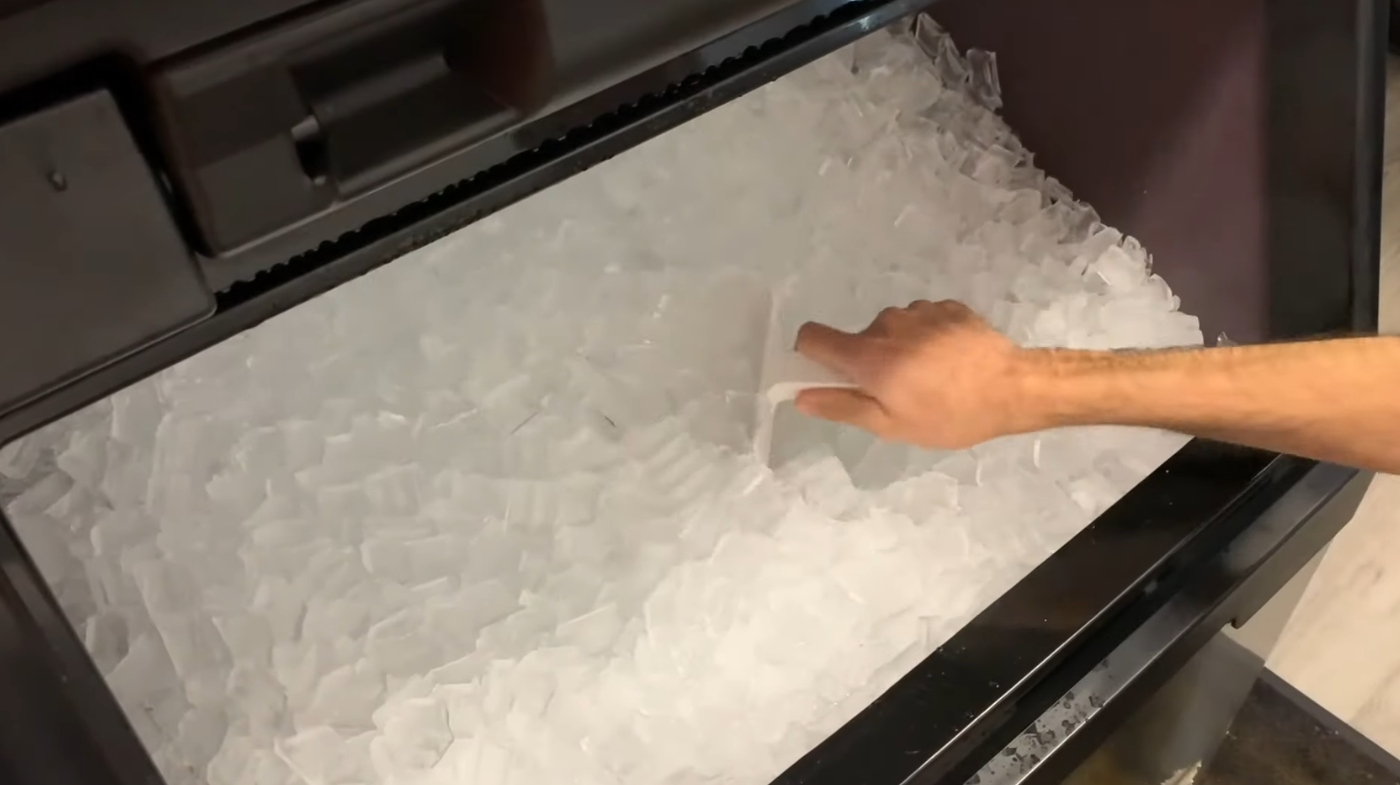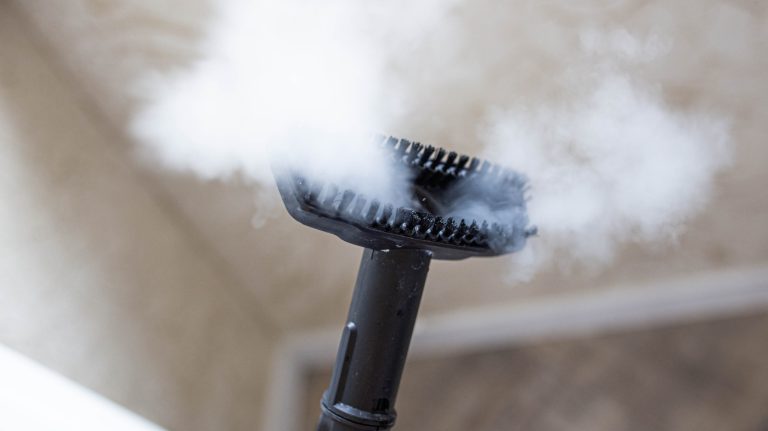How Often Should Commercial Ice Machines Be Cleaned?
You should clean your commercial ice machine at least quarterly to maintain hygiene, efficiency, and regulatory compliance.
In heavy-use or hard-water areas, more frequent cleaning might be necessary to prevent scale and bacterial buildup.
Regular maintenance also includes monthly sanitizing, inspecting components, and keeping filters fresh to extend equipment life and avoid costly repairs.
Proper care supports safe, high-quality ice and reduces energy costs. Keep going to discover detailed steps and best practices for effective ice machine maintenance.
Key Takeaways
- Clean commercial ice machines at least twice annually, with quarterly sanitizing recommended for optimal hygiene and compliance.
- Monthly interior scrubbing and descaling prevent mineral buildup, especially in areas with hard or poor-quality water.
- Heavy usage or high-traffic environments require more frequent cleanings to maintain ice quality and machine efficiency.
- Regular inspections and cleaning of filters, evaporator plates, and drainage lines help prevent contamination and equipment damage.
- Staff training and detailed maintenance logs ensure consistent cleaning schedules and regulatory compliance.
Recommended Cleaning Frequency for Commercial Ice Machines
How often should you clean your commercial ice machine to keep it running safely and efficiently?
The FDA recommends cleaning at least twice a year, though four times annually is ideal. Regular cleaning prevents grease and grime accumulation that can affect machine performance and hygiene.
Manufacturers often provide specific guidelines, so you should always follow those closely. Regular cleaning isn’t just about compliance, it prevents bacterial growth, mold, and mineral buildup that can compromise ice quality and machine efficiency.
Clean commercial ice machines at least twice a year to prevent contamination and maintain ice quality, which also helps prolong the equipment’s lifespan and ensures safety.
You must sanitize thoroughly during each cleaning to avoid contamination. Keeping a structured cleaning schedule helps you stay aligned with health codes and regulatory standards from bodies like the FDA and NSF.
Factors Influencing Cleaning Intervals
You’ll need to adjust cleaning intervals based on how often and where your ice machine operates, since heavy use and busy locations demand more frequent attention.
Water quality plays a critical role too—hard water causes mineral buildup that shortens cleaning cycles. Understanding these factors helps you maintain ice quality and machine efficiency without wasting time or resources.
Regular cleaning not only prevents buildup of scale, mold, and slime but also helps avoid unexpected breakdowns and costly repairs.
Additionally, using cleaning products compatible with your machine’s materials is essential to prevent surface damage and maintain long-term performance, similar to how quartz surfaces require chemical compatibility in their maintenance.
Usage and Location
Because usage patterns and location considerably impact cleaning intervals, you need to tailor your commercial ice machine maintenance accordingly.
If your machine operates continuously or serves a high-traffic bar or restaurant, clean it more often to prevent bacterial buildup. Frequent user interaction increases contamination risk, demanding tighter cleaning schedules.
Regular cleaning also prevents bacteria buildup, which is essential to maintain ice safety and quality.
Location matters too—machines in humid climates or dusty, poorly ventilated areas require more frequent cleaning to avoid mold and airborne contaminants.
Also, machines placed in high-traffic or dirty storage spots need extra attention. Ensuring proper airflow conditions around the machine can significantly reduce contamination risks and extend intervals between cleanings.
Consider health regulations in your area; stricter rules might mandate more frequent maintenance. Regular monthly inspections and weekly checkups help you adapt your schedule based on actual conditions.
Water Quality Impact
When water quality fluctuates, it directly affects your commercial ice machine’s cleaning intervals and overall maintenance needs. Hard water with high minerals causes scale buildup that clogs parts and shortens equipment life.
Extreme pH levels risk corrosion or more scale formation. Impurities cloud ice and block filters, requiring frequent cleanings.
Maintaining balanced water quality reduces wear and saves energy. Regular cleaning and maintenance, including the use of specialized rust removers, help prevent stubborn stains and prolong machine lifespan.
| Factor | Impact on Cleaning | Maintenance Tip |
|---|---|---|
| Mineral Hardness | Scale buildup; frequent descaling | Use softened or treated water |
| pH Level | Corrosion or scale formation | Monitor and maintain neutral pH |
| Impurities | Filter clogging; dirty ice | Install pre-treatment filters |
| Energy Efficiency | Increased energy use | Clean regularly for ideal operation |
Regulatory Requirements and Compliance
You need to follow FDA cleaning standards that classify ice as food, requiring strict sanitation protocols. Regular cleaning prevents bacteria and mold buildup, ensuring the ice remains safe for consumption.
Health codes and NSF guidelines set clear rules for cleaning frequency and documentation to keep your machine compliant.
Utilizing proper cleaning techniques and equipment helps maintain the machine’s hygiene and operational efficiency. Staying on top of these guarantees you avoid fines and maintain safe ice quality.
FDA Cleaning Standards
How often should you clean your commercial ice machine to meet FDA standards? The FDA requires cleaning at least twice a year, with additional sanitizing recommended every three months for optimal safety.
Follow your manufacturer’s instructions closely, as some models or heavy usage may demand more frequent cleaning. It is also important to monitor the machine during cleaning cycles to prevent potential overheating risks.
Always use FDA-approved, nickel-free cleaning agents with low phosphoric acid content, never household cleaners. Remove all ice before cleaning, thoroughly sanitize internal parts, and discard ice made during and immediately after cleaning.
Keep detailed maintenance logs documenting cleaning dates and any corrective actions, as FDA inspections can demand proof of compliance.
Regular inspections and prompt response to contamination are critical to maintaining both safety and machine longevity under FDA regulations.
Additionally, regular cleaning helps prevent health hazards from mineral deposits and mold, ensuring the ice remains safe and edible.
Health Code Compliance
Why does strict health code compliance matter for your commercial ice machine? It ensures your equipment meets local health standards, preventing contamination and protecting customers.
Local health departments enforce regulations by inspecting sanitation, cleanliness, and proper ice handling. Non-compliance risks fines or closure, so you must follow manufacturer cleaning guidelines and maintain detailed records.
Regular cleaning and sanitizing eliminate pathogens and support inspection readiness. You’ll need to keep ice bins dedicated solely to ice, use clean utensils, and enforce strict employee hygiene.
Additionally, ice must be made from water that meets primary drinking water standards to ensure safety water quality requirements.
Using approved cleaning agents is essential to avoid damaging the machine or compromising ice safety, as some chemicals can be harmful if misapplied safe cleaning agents. Additionally, signage restricting access to ice production or storage areas is often required.
NSF Sanitation Guidelines
Although maintaining a clean commercial ice machine might seem straightforward, adhering to NSF sanitation guidelines is crucial to meet regulatory requirements and guarantee compliance.
NSF/ANSI 20 sets strict food protection and sanitation standards for commercial equipment, including ice machines.
The NSF/ANSI 7 standard defines minimum sanitation and food protection standards specifically for commercial refrigerators and freezers, which include ice machines.
You must clean and sanitize your machine at least monthly, using manufacturer-recommended chemicals to prevent mold and soil buildup. Regular maintenance helps prevent oxidation and corrosion that could affect machine performance and hygiene.
NSF certification ensures your equipment uses safe, non-toxic materials and supports quick disassembly for thorough cleaning.
Health departments often require NSF-certified machines to protect consumer safety and avoid legal penalties.
Daily Maintenance Practices
When do you know your commercial ice machine is running at peak hygiene and efficiency? Start with daily exterior cleaning, wipe surfaces with a damp cloth and mild detergent to remove grease and dust. Using a pH-neutral cleaner is advisable to avoid damaging any surfaces.
Sanitize the ice bin and exposed water system parts using a food-safe sanitizer to prevent bacterial and mold growth. Regularly inspect for algae or slime growth, especially in wet areas, and address promptly to maintain ice quality.
Check and clear drain lines daily to avoid blockages and standing water, and inspect water hoses for leaks. Regular maintenance helps prevent mineral buildup that can contribute to soap scum and other residues.
Clean air filters and vents to ensure proper airflow and prevent overheating. Examine moving parts and ice trays for wear or debris, listen for unusual noises, and verify secure electrical connections.
Wipe control panels and maintain cleanliness around the machine to reduce contamination. Regularly remove cloudy or contaminated ice, and promptly address any water pooling near the base to prevent mold buildup.
Benefits of Regular Cleaning and Maintenance
Because regular cleaning and maintenance keep your commercial ice machine running smoothly, you’ll enjoy cleaner ice, better efficiency, and fewer breakdowns.
This prevents bacteria buildup, extends machine life, and reduces energy costs. You’ll also avoid costly repairs and sustain compliance with health codes, safeguarding your business reputation.
Regularly inspecting and cleaning components is essential to prevent unexpected breakdowns. Additionally, understanding and implementing safety precautions before maintenance helps avoid hazards and equipment damage.
| Benefit | Practical Impact |
|---|---|
| Clean Ice | Reduces bacteria and mold growth |
| Enhanced Efficiency | Lowers energy use and utility bills |
| Extended Lifespan | Avoids corrosion and costly repairs |
Maintaining your ice machine ensures consistent ice quality, maximizes uptime, and supports customer satisfaction.
Regular inspections help catch issues early, keeping your operations running without costly interruptions.
Common Problems From Neglecting Ice Machine Cleaning
Skipping regular cleaning on your commercial ice machine invites a host of problems that can disrupt operations and harm your bottom line.
You risk bacterial contamination and mold growth, which not only threaten health and safety but can also lead to failed inspections and costly fines.
Ignoring buildup causes your machine to work harder, increasing energy costs and reducing ice production efficiency. This inefficiency means higher utility bills and potential operational interruptions.
Mineral deposits and debris accumulate on evaporator coils, insulating the machine and further reducing cooling efficiency.
Furthermore, neglect can cause scale and clogs that damage components, leading to expensive repairs or premature replacement. Dirty machines also produce poor-quality ice, cloudy, bad-tasting, and unsafe, jeopardizing customer satisfaction.
To avoid these issues, maintaining a consistent cleaning schedule is critical for protecting health, optimizing performance, extending equipment lifespan, and controlling costs.
Step-by-Step Cleaning Process
Although cleaning a commercial ice machine might seem intimidating, following a clear, step-by-step process will guarantee thorough sanitation and maintenance.
First, power off and unplug the machine, then remove all ice and clean the bin with warm soapy water. Regular cleanings should ideally be done every three months to ensure compliance with food safety regulations.
Next, scrub interior parts and sanitize surfaces with FDA-approved solutions. Descale using the recommended solution and flush thoroughly.
Finally, clean exterior surfaces, air filters, and check for blockages. Reassemble parts, run a test cycle, and document the cleaning.
| Step | Action | Key Point |
|---|---|---|
| Preparation | Power off, remove ice | Safety first |
| Interior Cleaning | Scrub, rinse, sanitize | Use FDA-approved products |
| Descaling & Exterior | Circulate solution, wipe | Prevent mineral buildup |
Best Practices for Effective Ice Machine Care
Maintaining your commercial ice machine goes beyond routine cleaning; it requires a strategic approach to care that keeps it running efficiently and prolongs its lifespan.
Clean your machine monthly, removing all ice and thoroughly sanitizing surfaces. Inspect water supply lines regularly and replace filters to prevent mineral buildup.
Monthly deep cleaning and regular filter changes prevent buildup and keep your ice machine running smoothly.
Check condenser coils and moving parts, lubricating as needed to reduce friction. Regular maintenance also includes visually examining evaporator plates for damage or wear to ensure optimal ice quality. Monitor ice production rates and bin levels to catch early signs of issues.
Keep the surrounding area clean and ensure proper airflow. Replace damaged door seals promptly and clear drainage lines to avoid leaks.
Schedule professional deep cleaning and inspections bi-annually or annually to address hard-to-reach areas and essential components.
Importance of Staff Training and Record Keeping
When you train your staff properly and keep accurate records, you guarantee smooth operation and compliance with safety standards.
Training boosts efficiency, safety, and troubleshooting skills, while record keeping ensures maintenance is timely and legal requirements are met.
Together, they reduce downtime and improve customer satisfaction. Additionally, ensuring a steady, clean water supply is crucial for optimal ice machine operation and longevity.
| Training Aspect | Record Keeping Purpose | Business Impact |
|---|---|---|
| Hands-on operation | Maintenance schedules | Reduced downtime |
| Safety protocols | Staff competency logs | Improved customer service |
| Troubleshooting skills | Legal compliance records | Enhanced reputation |
| Customer interaction | Inventory management | Increased sales |
Regular workshops and digital record systems streamline these processes, making your ice machine care both compliant and efficient.
Frequently Asked Questions
Can I Use Household Cleaners to Sanitize Commercial Ice Machines?
You shouldn’t use household cleaners to sanitize commercial ice machines. They often contain chemicals that can damage the machine or leave harmful residues, risking contamination.
Instead, you need to use commercial-grade cleaning solutions designed specifically for ice machines. These products guarantee safe and effective sanitization without harming components.
To protect your equipment and meet health standards, always follow manufacturer guidelines and consider hiring professionals for thorough cleaning and maintenance.
How Long Does a Professional Ice Machine Cleaning Take?
Imagine the hum of your ice machine pausing briefly as a professional cleans it. Typically, the entire process takes about 30 to 60 minutes.
The cleaning cycle itself runs 15 to 30 minutes, depending on your machine’s size and model. Then, sanitizing adds another 15 to 30 minutes.
If parts need removal and individual cleaning, it could take longer. This thorough routine keeps your ice fresh and equipment reliable.
Is It Necessary to Shut Down the Machine During Cleaning?
Yes, you need to shut down the machine during cleaning. Shutting it down stops ice production, making all parts accessible for thorough cleaning and sanitizing.
You should empty the ice bin and disconnect power for safety. This step is vital to remove scale, bacteria, and contaminants effectively.
Following manufacturer and FDA guidelines ensures proper sanitation and prevents health violations, helping your machine run efficiently and last longer.
What Are Signs That My Ice Machine Needs Immediate Cleaning?
Did you know biofilm can form in just 24 to 48 hours? If you spot pink, black, or grey slime inside your ice machine or notice cloudy ice with odd tastes or smells, it’s time to clean immediately.
Unusual noises, slow ice production, or leaks also signal urgent maintenance. Don’t wait, address these signs right away to avoid contamination risks and costly repairs, keeping your machine safe and efficient.
Can Hard Water Affect the Ice Machine’s Cleaning Schedule?
Yes, hard water definitely affects your ice machine’s cleaning schedule. The minerals cause scale buildup inside, forcing you to clean more often to prevent damage and maintain efficiency.
You’ll likely need specialized cleaners or even a water treatment system to tackle mineral deposits. Ignoring this can shorten your machine’s lifespan and increase repair costs. Stay proactive by adjusting your cleaning frequency and addressing hard water issues promptly.
Keep It Clean, Keep It Running: Your Ice Machine Depends on You
You can’t afford to overlook your commercial ice machine’s cleaning schedule—it’s the heartbeat of your operation. Regular maintenance isn’t just about compliance; it’s about ensuring purity, efficiency, and longevity.
By staying on top of daily care and thorough cleanings, you’ll dodge costly breakdowns and health risks. Remember, a clean machine means crystal-clear ice every time. So, treat your ice maker right, it’s working harder than you think.







